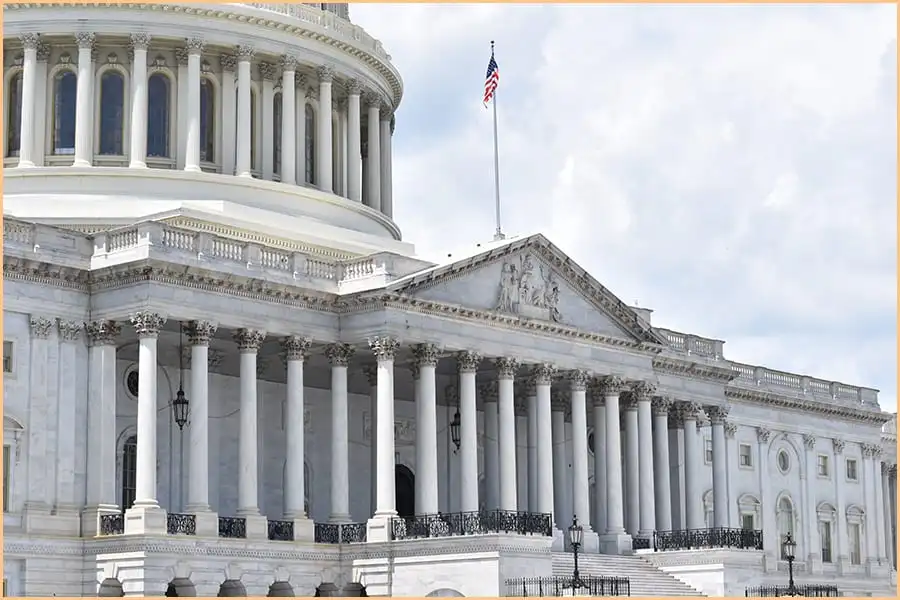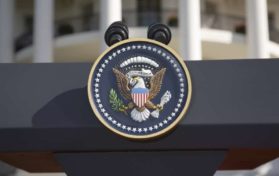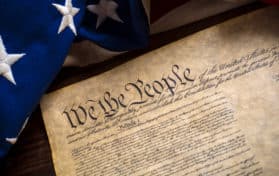
According to the United States Constitution, impeachment is the removal of civil officers, vice presidents, or presidents from office before their term is up.
Impeachment occurs to an official if they have committed treason, high crimes, bribery, and misdemeanors.
Although impeachment involves removal from the current office, an official can get disqualified from holding any public office in the future.
The official can also be subject to fines and conviction for crimes committed while in office.
Officials are impeached for crimes committed during office and for crimes before taking office. Impeachment intends to provide checks and balances that ensure the proper use of political power.
Impeachment trials are held in the Senate, where the defendant’s fate is determined.
So, can impeachment be overturned?
It is impossible to overturn impeachment even if the impeached state official calls for an appeal. The Supreme Court respects the impeachment process as indicated in the constitution.
The above is evident in the case of Nixon v United States. Senators impeached Nixon, and he appealed to the Supreme Court. The Supreme Court ruled that the senator’s verdict was final.
Who Has The Power To Impeach?
The Lower House has the authority to impeach, as provided for by the Constitution of the United States.
The Senate is mandated to try all impeachments; however, two-thirds of members must be present for conviction. Under articles one and three.
The impeachment process involves both houses of the bicameral legislature. Motions for impeachment must clear the floor of the House of Representatives before going to the Senate.
Origin Of Impeachment
The impeachment process can be dated back to the 14th century in England. It formed part of the British constitution by then. The introduction of impeachment ensured the King’s advisers and ministers were accountable.
In the 15th century, the people of England began to misuse impeachment but were revived in the 17th century.
One of the impeachments carried out during this era was Warren Hastings, a British official. He was the first governor-general in India. His impeachment was due to oppression, fraud, and bribery.
The American governments and state constitutions followed suit and advocated for impeachment.
It was before the constitution was made. The main reason for this was to prevent abuse of power by those in office. It led to the inclusion of impeachment in the newly formed United States Constitution.
Impeachment in the US followed the British pattern. The lower House brought charges to the upper legislative body for trial.
Today, the lower House is the House of Representatives, while the upper legislative body is the Senate.
Framing Of The Constitution
There were controversies on who should have the power to carry out impeachment. There was the need to identify crimes that could lead to impeachment. The venue to carry out impeachment and the process to be followed also needed to be addressed.
Each person had their opinion on who should have the power. The King of Massachusetts argued that electors should have the power to impeach.
He was against the legislature carrying out impeachment as it would result in problems of separation of power. That mainly arises between the legislative and executive branches.
James Madison and Charles Cotesworth did not also support the Senate’s impeachment. They argued that it could result in overdependence on the legislative body.
James Madison and Charles Cotesworth proposed that the Supreme Court deal with and handle all matters related to impeachment.
The British used to conduct impeachment processes in the House of Commons and the present-day House of Lords.
The House of Commons, the Lower House, brought charges to the House of Lords, the upper legislative body, for trial. The chief justice then presides at the trial.
The framers also defined the impeachable crimes during this period. Alexander Hamilton of New York described impeachable crimes as misconduct of public men or violation of public trust.
Crimes such as; ‘corrupt conduct and malpractice’ or neglect of duty were renamed ‘treason and bribery.’
However, George Mason of Virginia argued that the terms ‘treason and bribery’ did not fully address the punishable offenses. James Madison also objected to ‘maladministration’ due to its vagueness.
Mason then added ‘high crimes and misdemeanors’ to treason and bribery. He borrowed these terms from the British common law tradition. High crime means abuse of power by a highly ranked state official.
Process Of Impeachment
Impeachment constitutes two significant phases involving the Senate and House of Representatives. In 1905 Hoar had proposed a rule regarding delegation of the Senate’s power to the committee.
The rule was later adopted and proposed by senator Henry Ashurst of Arizona, the judicial committee chairman, in 1934. The Senate adopted the new rule and referred to it as Rule XI.
The impeachment process is long and consumes a lot of time. The Senate experienced the longevity of this process during the Impeachment of Judge Charles Swayne in 1905. The trial of judge Harold Louderback took nearly a month.
The process begins;
In the Lower House,
- The House of Representatives investigates any wrongdoing by a state official through public hearings and gathers evidence. It comes up with conclusions and a formal impeachment inquiry.
- The lower House will send an inquiry to the Judiciary Committee. The House of Judiciary Committee deliberates on whether impeachment is necessary.
- If the House of Judiciary committee allows, the chairman of the Judiciary Committee will propose a resolution.
The resolution aims to seek authority from the entire House of Representatives. It will help decide whether or not to conduct a formal inquiry into the issue of impeachment. The process requires a majority of the Vote.
- The Judiciary Committee will then conduct an inquiry. Articles of Impeachment are written statements containing any charges leveled against the defendant. Through a resolution, the committee then decides whether it would be necessary to present these articles before Congress.
- The lower House then debates these articles presented and votes. If there is a special resolution, the representatives approve the articles; the defendant official is formally impeached.
Note that the defendant will remain in office until proven guilty.
In the Upper House,
- From the House of Representatives, articles are delivered to the Senate. The Senate tries the defendants, and the leader of the Supreme Court takes over the case proceedings.
- The attorneys of the state will act as a defense during the trial. However, the Supreme Court cannot intervene in matters of the Senate. The Senate is protected by the constitution and is mandated to impeach.
- The Senate will afterward meet in private and debate on the verdict. Evidence presented is considered; in the latter stages of the hearing, the Upper House will vote on the articles of impeachment. The grounds for upholding impeachment require that 66% of the Senators agree on the verdict.
- If a conviction passes, this will automatically remove the state official. If the state official removed was the president, the vice president would replace them.
- The Senate may also vote to permanently prohibit the state official from taking up a public office based on the majori ty. The process applies to officers appointed under the Appointment Clause. The state official may also be prosecuted and fined due to crimes committed while in office.
Use Of Impeachment
So far, only three presidents have undergone impeachment by the House of Representatives. These presidents are Andrew Johnson in 1868, Bill Clinton in1998, and Donald Trump in 2019 and 2021.
Andrew Johnson’s impeachment resulted from the Congress being unhappy with his dealing in the post-civil war.
Bill Clinton was impeached based on charges underlying perjury and obstruction concerning an affair with a white house intern. The Impeachment of Donald Trump was due to abuse of power.
The Senate has only conducted fifteen impeachment trials. Only eight federal officials have undergone conviction and were removed from office by the Senate. No president has ever been found guilty during a senate trial.
Conclusion
Misuse of power can be detrimental; the founders of the United States knew this. Most countries were facing this issue too. They knew they had to develop some mitigation, which is impeachment.
The process of impeachment is not punitive. Instead, it is remedial. The remedy here is removal from the office. The process ensures that each person in power adheres to the law and constitution. Impeachment is a fair process as it is neither carried out by an individual nor through a single process.





